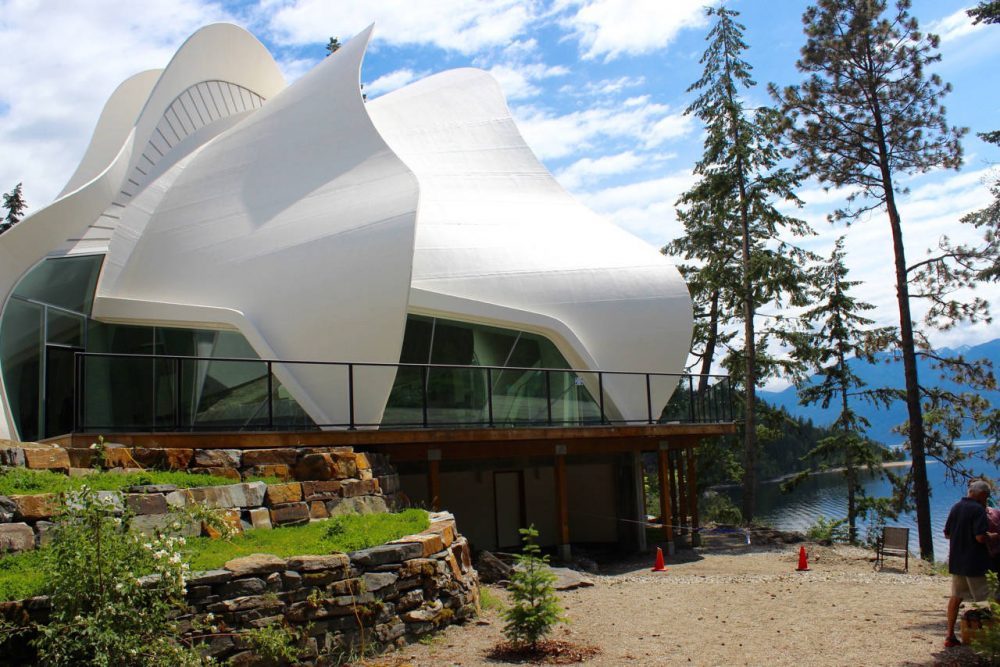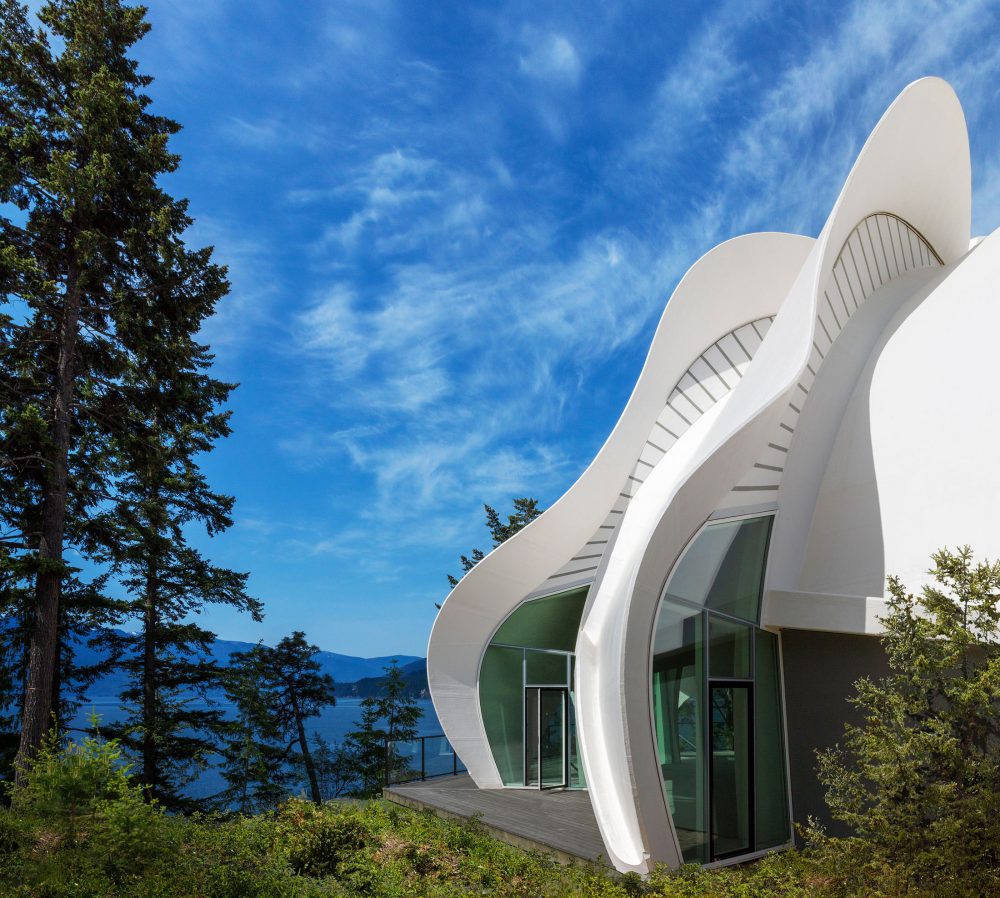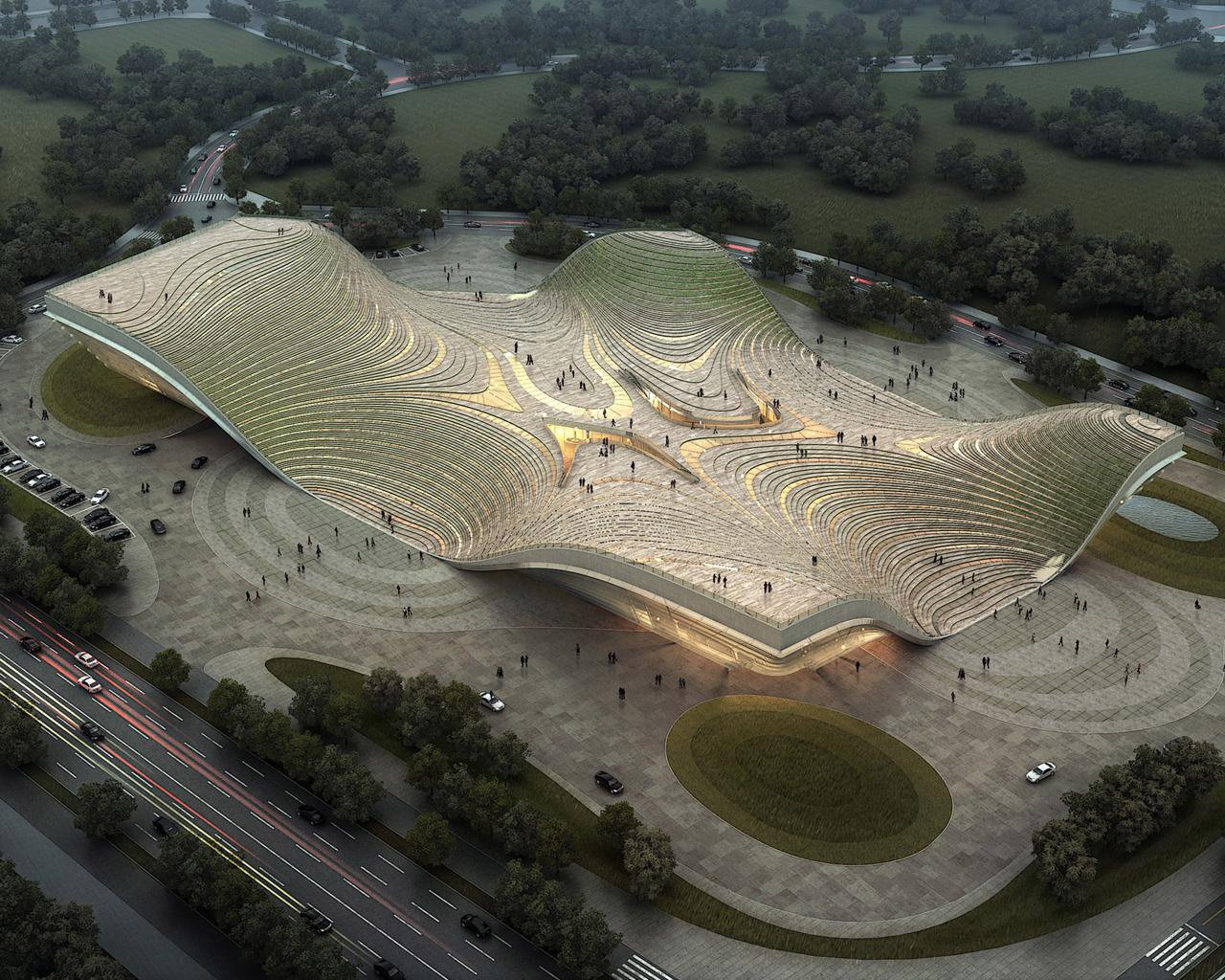Temple of Light

A sprawling array of white crests unfolds along the ridges of Canada’s Kootenay Mountains. Specially named after its vision to metaphorically invite the “light,” Patkau Architects’ Temple of Light is an architectural experiment on “pure spaces” and how they elevate the rawness of being present in the moment.
Serving as a meeting place and spiritual sanctuary for the Yasodhara Ashram in Kootenay Bay, Temple of Light was originally built in 1992 but was unfortunately destroyed by a fire in 2014. The remote temple sits on its original concrete foundations that remained after the fire – with overlooking views of the forest’s edge and the Kootenay Lake.
Due to the remoteness of the site, a greater social ambition persists wherein the community’s need for sustainable, re-deployable, and efficient building systems are highlighted. The Ashram community’s commitment to sustainability and minimal ecological intervention inspired material- and cost-efficient building techniques.
Now, the Temple of Light represents a renewed embodiment of the original temple – the majority of which made from wood and prefabricated off-site in modular units. It showcases a curvilinear yet evocative form that blossoms into eight luminous petals, gracefully ascending from the ground. Its 3,500-sqft area is then distributed into a pinwheel layout, accumulating a total of eight doors symbolizing its acceptance of people from all spiritual paths. On a practical scale, the abundance of access points throughout the form suffused the interior with light and expansive views of the surrounding wilderness.
Despite its spatially transparent form, the temple’s interiors is a mystery in itself. Its lovely resonance resulted from the designers’ careful attention to acoustics. As light enters the form, brightness slips across its smooth inner surfaces, contrasted by its shadow-brushed heights to create a sense of magnificence. At its peak, an oculus collects the form around an illuminated core, offering a dynamically ethereal view.
Where forces are often at odds with one another, architecture shall serve as the mediator that fosters complex relationships while compromising the threshold of what is imaginable. In sacred and contemplative spaces such as the Temple of Light, the spatial expression of purity clearly outsets its commitment of stirring something more than the ordinary – something that does not meet the eye yet is clearly captured through intimate spatial experiences.
- Canada
- Patkau Architects Inc.
- https://patkau.ca/projects/yasodhara-ashram/








Category Religious





